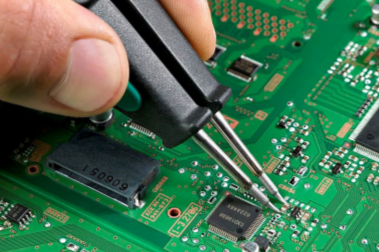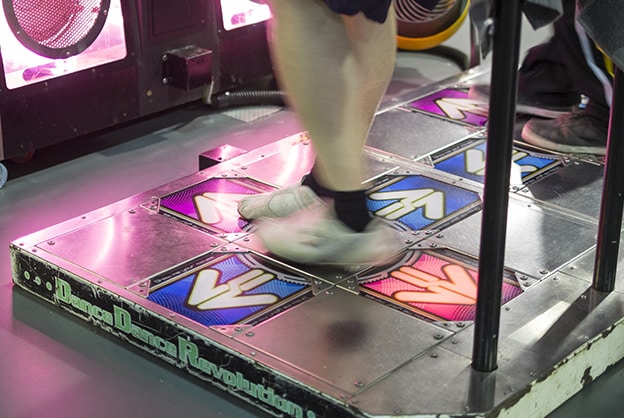Overview
STEM careers
Time
Materials
Per Whole Group:
|
Per Team:
|
Relevant Terminology
Circuit: The complete path that an electric current follows, including the energy source.
Conductor: A substance that transfers heat, electricity, or sound. Copper wire is a good conductor of electricity.
Current: The rate of flow for an electric charge. In other words, how much electricity is flowing. A strong current means that a lot of electricity is flowing.
Electricity: A form of energy caused by the flow of electrons that occurs naturally and can be transferred through conductive materials such as wires.
Load: An electrical component or portion of a circuit that consumes power. This could be a TV, oven, computer, or anything else powered by electricity.
Switch: A small device that starts or stops the flow of electricity when pressed or moved up or down.
Introduce
GETTING READY
- Find a work area with enough room for participants to spread out and test their designs.
- You may cut the wire into various lengths (6″, 12″, etc.) and strip the ends before the activity to save time.
- Test the batteries, lights, and buzzers to make sure they work.
INTRODUCTION

A circuit board. Circuits are paths for electricity to flow through. Engineers design tiny circuits in mobile phones, computers, and even toys. Credit: Aisart/Wikimedia Commons.
A circuit is a path that electricity flows through. Any electronic devices you use, like smartphones, game consoles, and even refrigerators, rely on circuits to work. The circuits in this activity have a power source (battery), a resistor (a buzzer or a light), and wires that conduct electricity. Circuits can control a simple system, such as turning on the refrigerator light when you open the door, or a complex task, such as mathematical computation.
For a circuit to work, it must be “closed”—that is, it must provide a complete path for an electrical current to flow. A switch can “open” a circuit by physically disconnecting wires to turn a device off; a switch can also close a circuit by connecting or reconnecting wires. So, switches can stop and start the flow of electricity through a circuit. Today you’ll design a switch that’s operated by dancing (or stomping) on it.
Instructions
Ask participants where there are switches or circuits in their homes and what they control. Ask them if they can think of other places outside of the home where there are different kinds of switches.
Introduce the design challenge: make an electrical dance pad that operates a light or buzzer.
Before building a dance pad, participants will need to know how to construct a simple circuit. Build a simple circuit by connecting the battery to the light or buzzer. You will need to help participants with this step. Once they know how to build a circuit, the rest of the activity will be easier.
- Cut two lengths of wire about 6″.
- Use the wire strippers to remove the insulation from the last half-inch of each end of the wire.
- Use tape to connect one side of one wire to the positive end of the battery and the other side of that wire to the red wire on the buzzer or to one side of the bulb holder.
- Use tape to connect another wire to the negative end of the battery and to the black wire on the buzzer or to the other side of the bulb holder.
- The buzzer or light should now be turned on. Disconnect the wires to turn it off. WARNING: Never directly connect both ends of a battery. This creates a short circuit that can damage the battery or cause injury.
Encourage participants to experiment with making the circuit switchable. The easiest way to do this is to make a gap in the circuit that is closed by touching two wires together.
- Disconnect one wire in your simple circuit from the light or buzzer.
- Connect a third wire to the light or buzzer.
- Complete the circuit by touching the two loose wires together, which turns on the light/buzzer. Move the wires apart to open the circuit and turn off the device.
- Tear off a strip of aluminum foil. Touch the two loose wires to the foil. Does your circuit work?
Encourage participants to work in teams of 2–4 to design the dance pad.
- Participants should make the circuit danceable by sandwiching the circuit between two pieces of cardboard, such as cereal box panels.
- Encourage them to think about how they can switch the circuit on or off using the materials provided and how they can get the switch to open when their foot is removed from it.
- Important: The battery and light/buzzer should NOT be danced on. Test the dance pads. Does the buzzer or light come on when participants stomp on the pad? Does it turn off when they remove their foot?
- Play some music and have a dance party!
Evaluate the success of each design.
- Did the circuit make the buzzer or light work?
- Could the circuit be switched on and off?
- Was the dance pad rugged enough to be danced or stomped on without falling apart?
ACTIVITY VARIATIONS
- Make a dance pad that controls multiple lights and buzzers.
- Find something else that your dance pad can operate. Radios, electronic toys, and many other items can be hacked to work with your dance pad circuit.
- Make a dance pad that turns on different lights or buzzers when you step on different areas of it.
TROUBLESHOOTING
Make sure all connections are tight. Loose wires are an easy fix for a circuit that isn’t working.
Is the buzzer or light properly connected to the battery? The red wire should go to the positive (+) end of the battery; the black wire should be connected to the negative (-) end of the battery.
If the dance pad doesn’t spring open after you step on it, try using folded pieces of cardboard along the edge that can spring open when you step off the pad.
Guiding questions
GUIDANCE FOR YOUNGER CHILDREN
QUESTIONS TO ASK AFTER THE ACTIVITY
- Did anything go wrong while you were trying to build a switch that turned the buzzer or light on when you stomped on it? How did you fix it?
- What materials did you use to create your dance pad?
- What is a switch and how does it work in your dance pad?
- What changes did you make to your design while building and testing?
GUIDANCE FOR OLDER YOUTH AND ADULTS
QUESTIONS TO ASK AFTER THE ACTIVITY
- What were some structural concerns that you addressed while building your dance pad?
- How did you design your switch?
- Where did you place the battery?
Engineering & science connections
GUIDANCE FOR YOUNGER CHILDREN
Engineering Connections
Have you ever wondered how a light switch works or what is happening when you press the power switch on your computer? To harness the power of electricity, engineers use circuits, which are complete paths that electricity can flow through. Basic circuits contain a power source, a conductor, a load, and a switch. For circuits to be useful, people must be able to control them. Imagine if you couldn’t turn off your oven, your TV, or the lights in your house. Controlling when a circuit is on or off is the purpose of a switch. When a switch is “open,” it means that electricity cannot flow through the circuit and nothing attached to it will work. When a person “closes” a switch, the circuit is once again complete, electricity can flow, and the lights come on.
Science Connections
Circuits are used to carry electricity from a power source to electrical devices such as refrigerators, lights, televisions, and radios. Circuits are made up of a power source, wires that can carry electricity, a switch, and a device that uses electricity. The power source, often a battery, contains two ends—much like a river has a start and a finish. Just like water flowing through a river, the electricity in a circuit will flow from one end of the battery to the other through a good conductor like copper wire. As the electricity passes through a device, like a computer, oven, or lightbulb, that device will use some of the electricity’s energy so that it can operate. How fast the electrons move through the circuit is called current, which, again, is similar to the current in a river. The more water that flows through a river, the greater the current. In the same way, the more electricity that flows through a circuit, the greater the current in the circuit.
GUIDANCE FOR OLDER YOUTH AND ADULTS
Engineering Connections
If you take apart an electronic device, it will look quite different from the circuit you made today. Modern electronics use printed circuit boards instead of wires to direct the flow of electricity. Printed circuit boards have copper pathways traced along the surface that connect various electronic components. With these circuit boards, electronics can be made smaller than they can with hand-wired circuits, and mass production is easier. The end result is a more durable, reliable product that is cheaper for consumers.
Science Connections
Electrical conductors allow electrons to be shared by neighboring atoms, facilitating the flow of electrical current. Metals like copper, gold, and silver are good conductors, as is salt water. Insulators are materials that don’t allow for easy movement of electrons. Plastics, wood, air, and rubber are all good insulators. The cardboard in your dance pad is made of wood pulp, which makes it an insulator. The insulation on the wires is made of plastic, which is why it protects you from electrical shocks.
This “Dance Pad” activity was adapted from the Design Squad Educator’s Guide, pbskids.org/designsquad/parentseducators/guides/index.html. Used with permission from WGBH Educational Foundation.
Major funding for Design Squad is provided by the National Science Foundation and the Intel Foundation. Additional funding is provided by Tyco Electronics, National Council of Examiners for Engineering and Surveying, The Harold and Esther Edgerton Family Foundation, Noyce Foundation, Intel Corporation, American Society of Civil Engineers, and IEEE. ©2007 WGBH Educational Foundation. Design Squad and logo are trademarks of WGBH Educational Foundation. All rights reserved. All third party trademarks are the property of their respective owners. Used with permission. This Design Squad material is based upon work supported by the National Science Foundation under Grant No. ESI-0515526. Any opinions, findings, and conclusions or recommendations expressed in this material are those of the author(s) and do not necessarily reflect the views of the National Science Foundation. Design Squad is produced by WGBH Boston. Design and consulting services provided by Continuum.
Supplemental content adapted for Dream Big Activities by Carnegie Science Center.


0 Comments